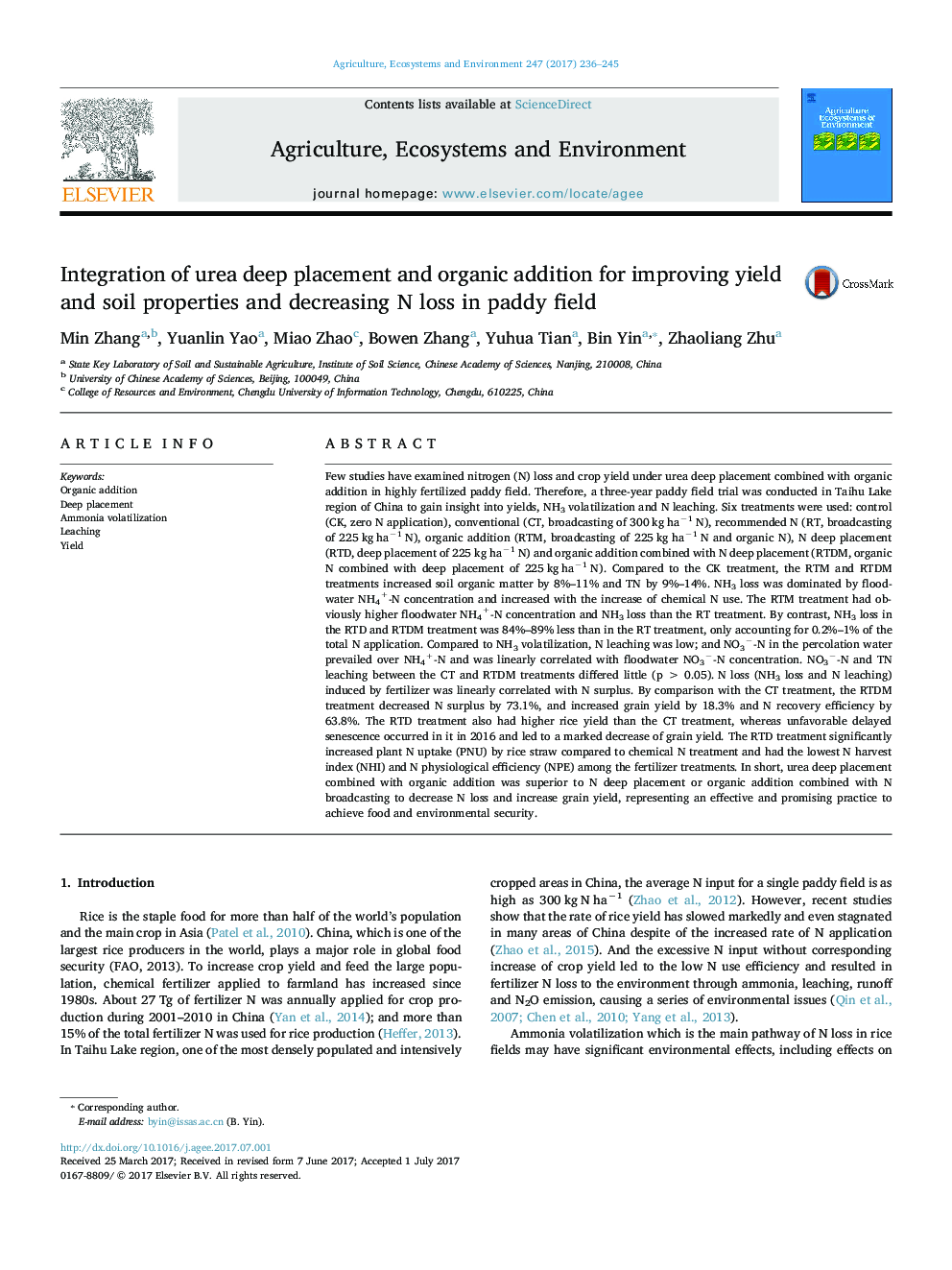| Article ID | Journal | Published Year | Pages | File Type |
|---|---|---|---|---|
| 5537997 | Agriculture, Ecosystems & Environment | 2017 | 10 Pages |
Abstract
Few studies have examined nitrogen (N) loss and crop yield under urea deep placement combined with organic addition in highly fertilized paddy field. Therefore, a three-year paddy field trial was conducted in Taihu Lake region of China to gain insight into yields, NH3 volatilization and N leaching. Six treatments were used: control (CK, zero N application), conventional (CT, broadcasting of 300 kg haâ1 N), recommended N (RT, broadcasting of 225 kg haâ1 N), organic addition (RTM, broadcasting of 225 kg haâ1 N and organic N), N deep placement (RTD, deep placement of 225 kg haâ1 N) and organic addition combined with N deep placement (RTDM, organic N combined with deep placement of 225 kg haâ1 N). Compared to the CK treatment, the RTM and RTDM treatments increased soil organic matter by 8%-11% and TN by 9%-14%. NH3 loss was dominated by floodwater NH4+-N concentration and increased with the increase of chemical N use. The RTM treatment had obviously higher floodwater NH4+-N concentration and NH3 loss than the RT treatment. By contrast, NH3 loss in the RTD and RTDM treatment was 84%-89% less than in the RT treatment, only accounting for 0.2%-1% of the total N application. Compared to NH3 volatilization, N leaching was low; and NO3â-N in the percolation water prevailed over NH4+-N and was linearly correlated with floodwater NO3â-N concentration. NO3â-N and TN leaching between the CT and RTDM treatments differed little (p > 0.05). N loss (NH3 loss and N leaching) induced by fertilizer was linearly correlated with N surplus. By comparison with the CT treatment, the RTDM treatment decreased N surplus by 73.1%, and increased grain yield by 18.3% and N recovery efficiency by 63.8%. The RTD treatment also had higher rice yield than the CT treatment, whereas unfavorable delayed senescence occurred in it in 2016 and led to a marked decrease of grain yield. The RTD treatment significantly increased plant N uptake (PNU) by rice straw compared to chemical N treatment and had the lowest N harvest index (NHI) and N physiological efficiency (NPE) among the fertilizer treatments. In short, urea deep placement combined with organic addition was superior to N deep placement or organic addition combined with N broadcasting to decrease N loss and increase grain yield, representing an effective and promising practice to achieve food and environmental security.
Related Topics
Life Sciences
Agricultural and Biological Sciences
Agronomy and Crop Science
Authors
Min Zhang, Yuanlin Yao, Miao Zhao, Bowen Zhang, Yuhua Tian, Bin Yin, Zhaoliang Zhu,
